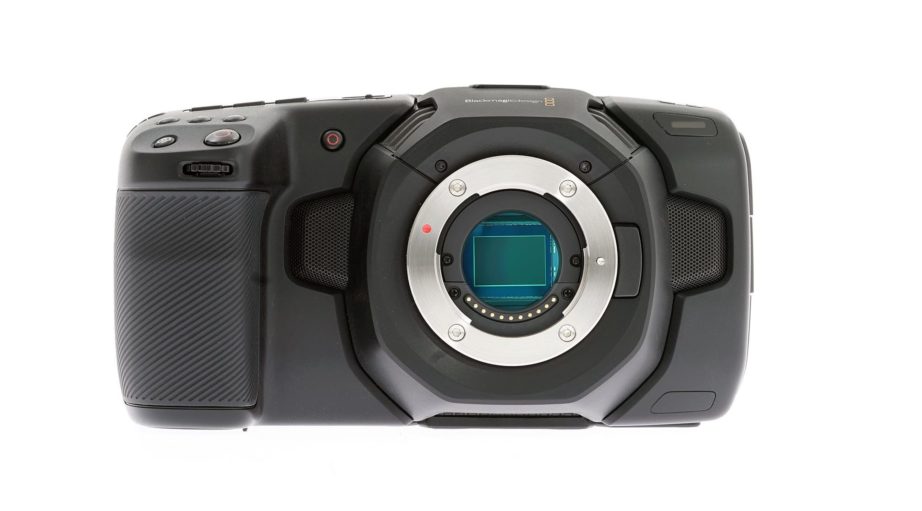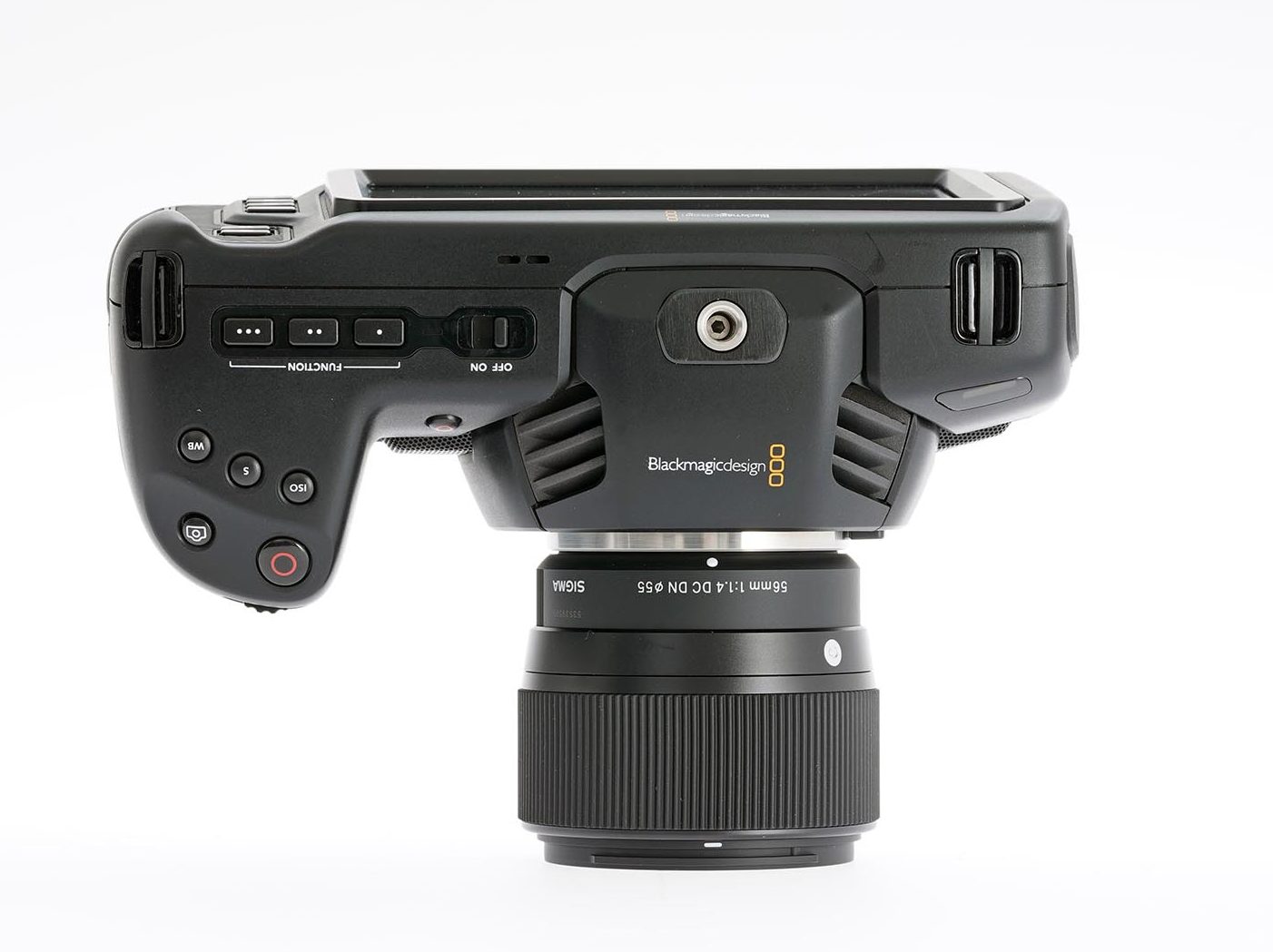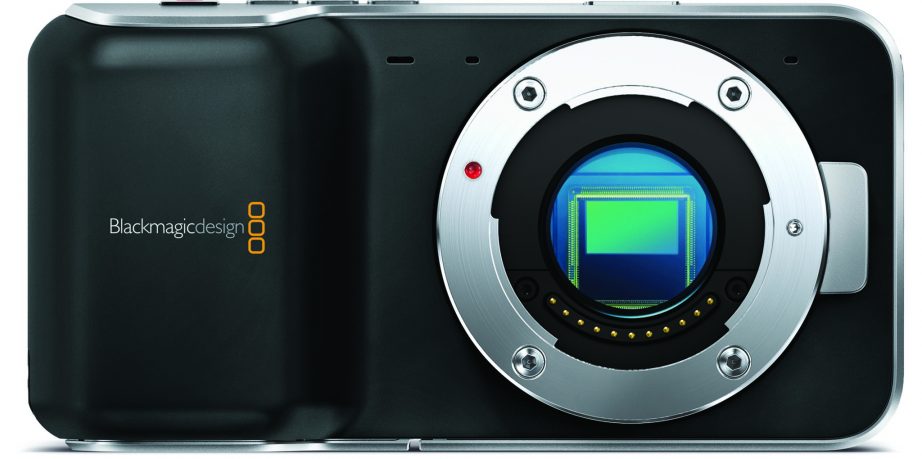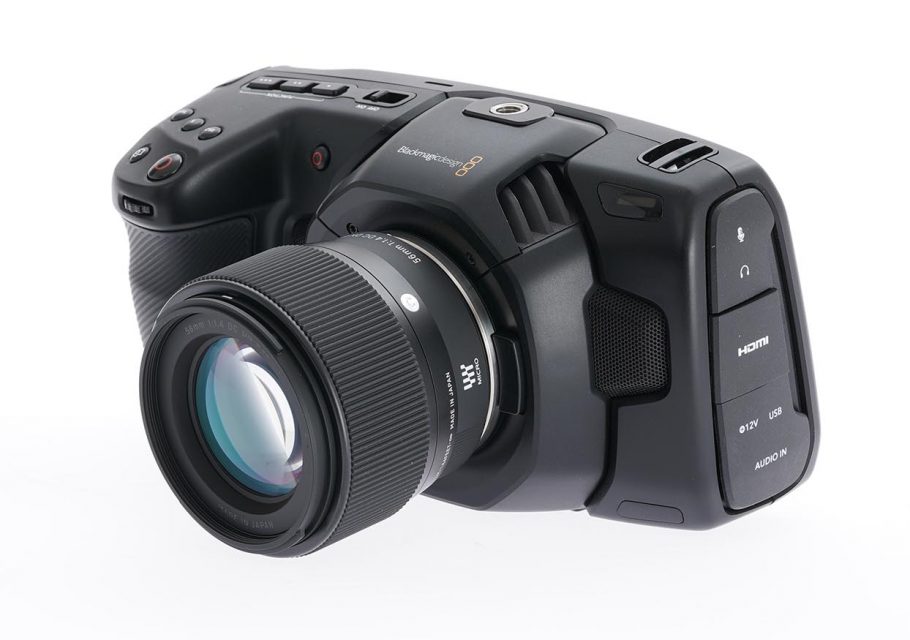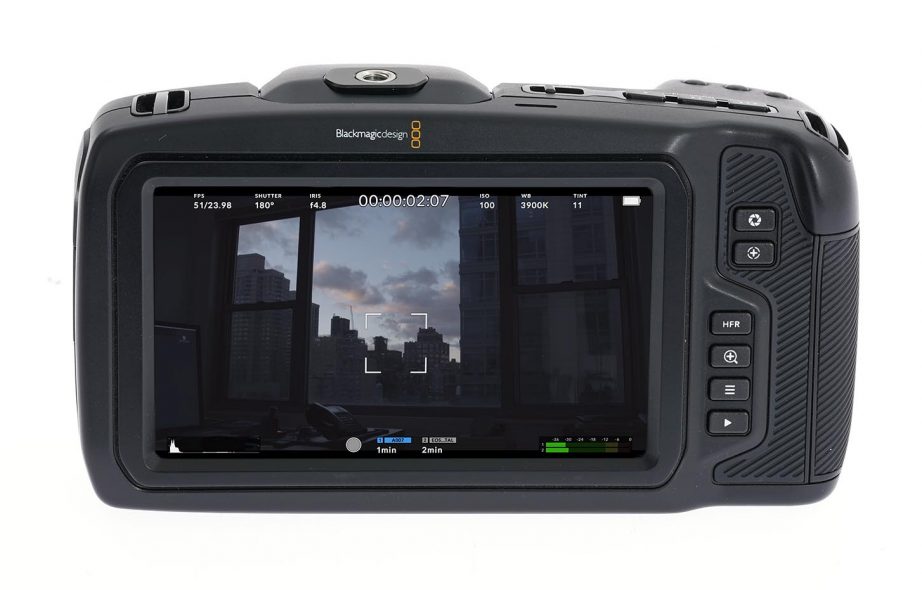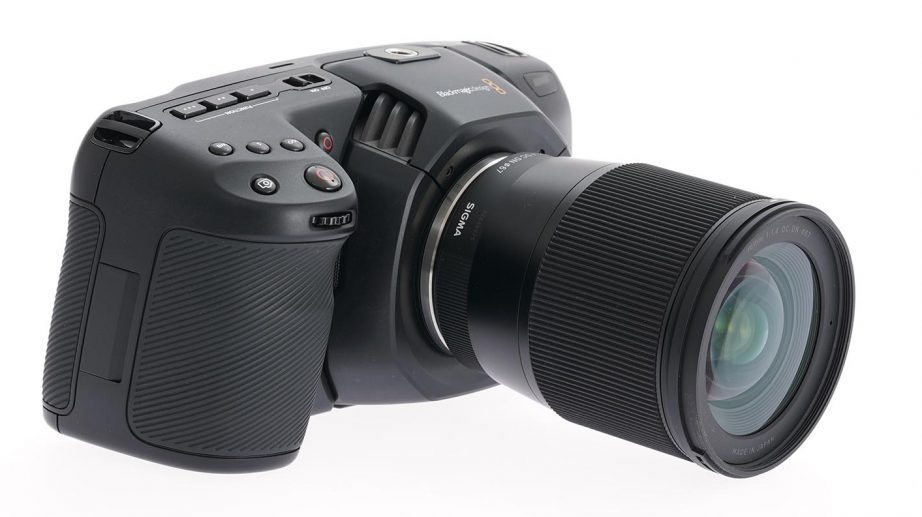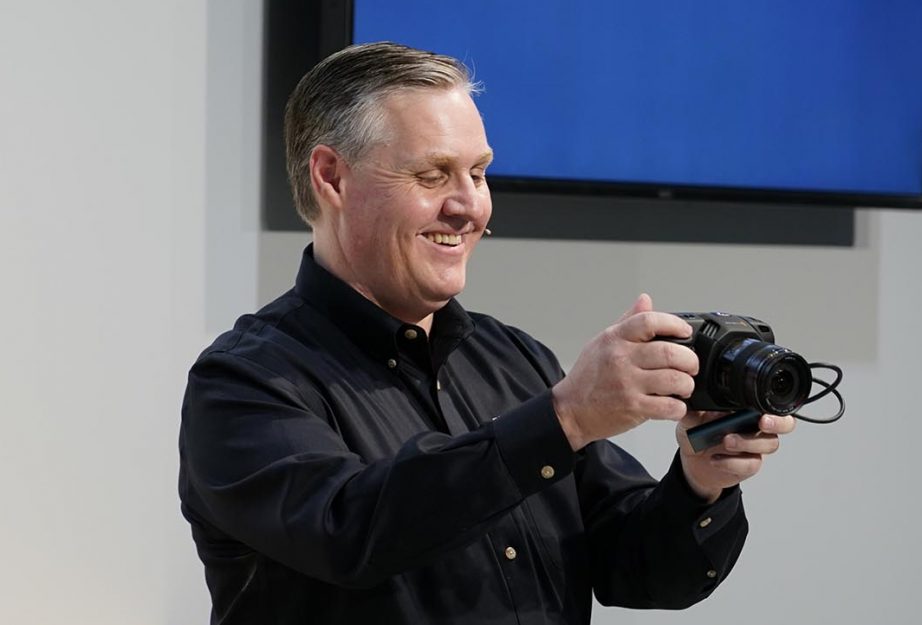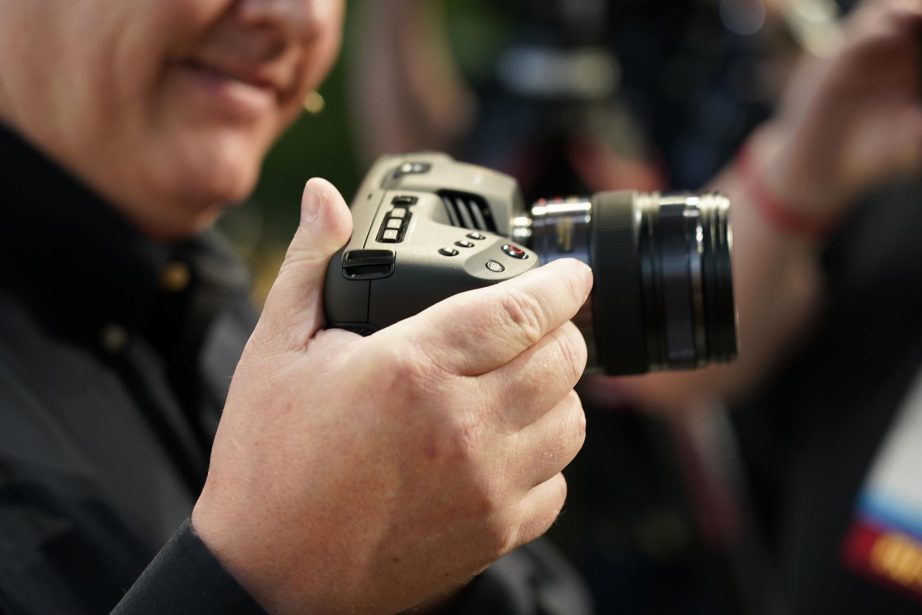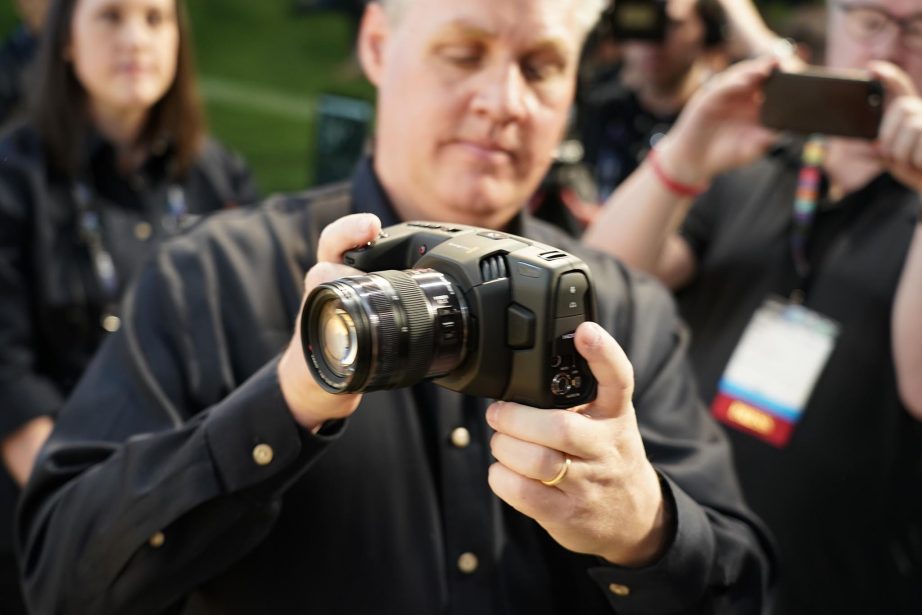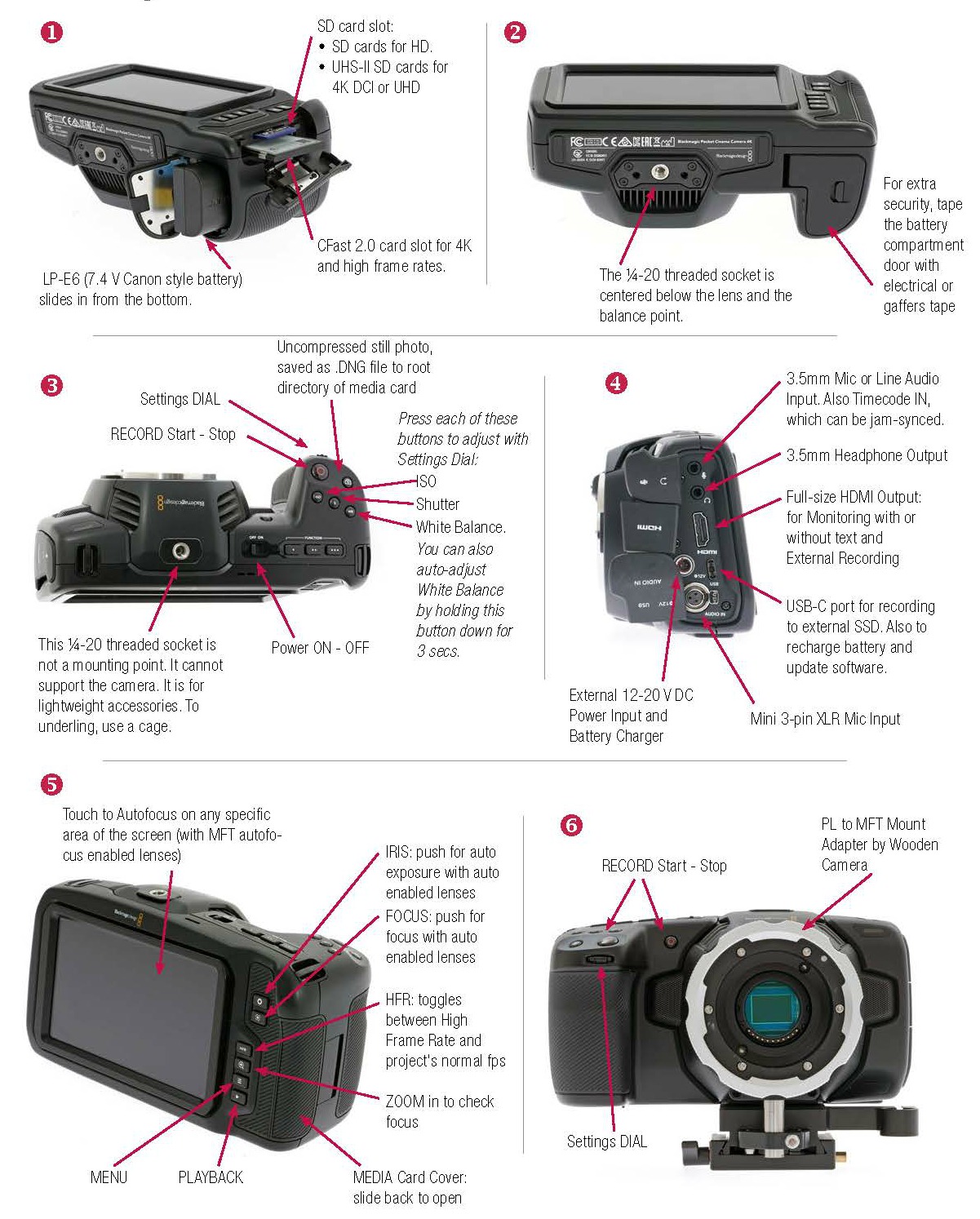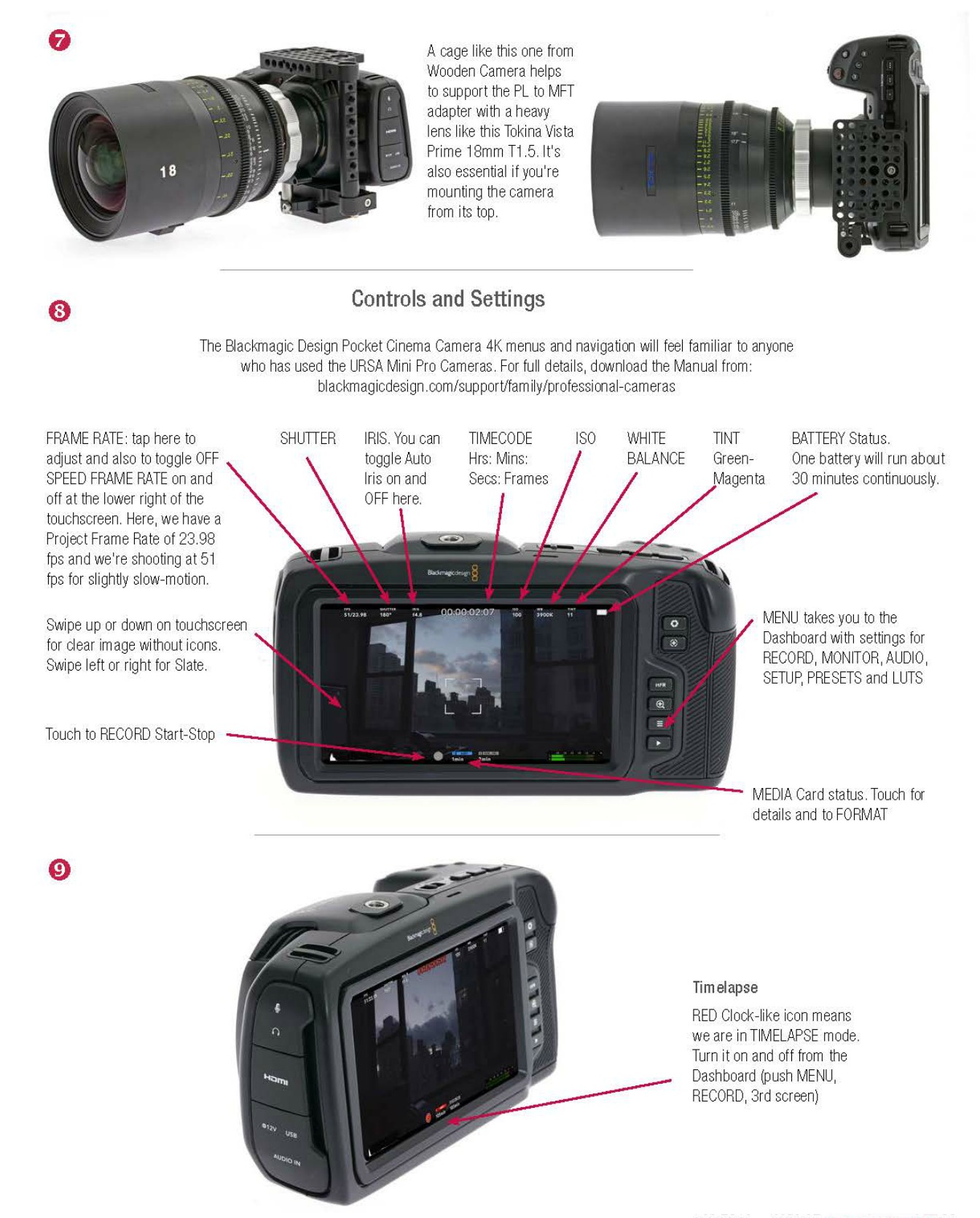Now with Blackmagic RAW
Blackmagic Camera 6.2 update eanbles Blackmagic RAW in the Blackmagic Pocket Cinema Camera 4K.
The Pocket Cinema Camera 4K has a Micro Four Thirds (MFT) size 18.96 x 10 mm sensor. The lens mount has a Flange Focal Depth of 19.25mm and its inside diameter is nominally 40.2 mm Ø.
Blackmagic RAW is a new codec that combines the quality and benefits of RAW with the ease of use, speed and file sizes of traditional video formats. File sizes are smaller, which means recording time is longer. You’ll be able to record 2 hours of Blackmagic RAW in 4K on a single 256GB SD UHS-II card.
Blackmagic RAW has two types of file compression. You can choose constant quality or constant bitrate encoding.
Constant quality uses variable bitrate encoding so complex frames are managed at higher data rates to preserve detail and maintain the highest possible quality. Blackmagic RAW Q0 has minimum quantization and yields the highest quality. Blackmagic RAW Q5 uses moderate quantization for more efficient encoding and a smaller file size.
Constant bitrate encoding provides predictable and consistent file sizes. Blackmagic RAW 3:1, 5:1, 8:1 and 12:1 ratios are calculated by the unprocessed file size of a single frame from the camera’s sensor.
Blackmagic RAW Q0 and 3:1 are excellent for effects-heavy features and commercials. Blackmagic RAW Q5 and 5:1 are suggested for episodic television and independent films. Blackmagic RAW 8:1 and 12:1, with the highest compression, are enticing for productions that wouldn’t normally consider shooting RAW.
Typically, RAW codecs typically had large file sizes. Blackmagic RAW offers the same quality, bit depth, dynamic range and controls as RAW, but with better performance and smaller file sizes. Once files are brought into DaVinci Resolve, additional GPU and CPU acceleration make decoding of frames incredibly fast.
When Blackmagic RAW settings are changed in DaVinci Resolve, a .sidecar file can be generated or updated if one already exists. When opened in other software applications that support Blackmagic RAW, the .sidecar file, which contains the Blackmagic RAW settings made in DaVinci Resolve, will be automatically used to display the image. If the .sidecar file is removed, then the file will be displayed using the embedded metadata instead. This new workflow gives you a non-destructive way to change Blackmagic RAW settings while working between different applications.
Image data, along with the unique characteristics of the image sensor, are encoded and saved into the Blackmagic RAW file, which offers better image quality, even at higher compression settings, and control over ISO, white balance, exposure, contrast, saturation and more.
Blackmagic RAW is optimized for AVX, AVX2 and SSE4.1 enabled processors, works across multiple CPU cores and is GPU accelerated with support for Apple Metal, CUDA and OpenCL. Frame decoding and image processing is extremely fast, making it nimble for editing, color correction and visual effects in DaVinci Resolve. There’s another big benefit: media is stored as single files, and not image sequences. This simplifies media management and file copying is much faster.
The free Blackmagic RAW Developer SDK is available on Mac OS, Windows and Linux. This SDK helps developers add support for Blackmagic RAW to third party software applications. Developers get access to GPU and CPU accelerated algorithms for decoding files, along with unique information about the camera’s image sensor, so their applications can accurately decode and display the files. The SDK has highly descriptive and flexible metadata options. Metadata is embedded directly in the .braw file or it can be stored in a .sidecar file. Metadata is important because it contains the Blackmagic RAW settings along with information about lens focal length, iris, focus, slate, white balance and a lot more. Metadata in the .sidecar files can be used on top of the embedded metadata without overwriting it. Blackmagic RAW also supports frame-based metadata. This is important when focus is changing on a frame by frame basis, for example, as you dolly into a subject.
Grant Petty, Blackmagic Design CEO, summed it up: “Blackmagic RAW gives you the visually lossless image quality of RAW with the speed of traditional video workflows.”
Blackmagic Camera 6.2 update is available now as a free download. www.blackmagicdesign.com/support
Blackmagic Pocket Cinema Camera 4K
Reprinted from Film and Digital Times February 2019 Edition #92
The Blackmagic Pocket Cinema Camera 4K is rugged, compact, lightweight and shoots video, stills and timelapse. It was introduced at NAB 2018 and is shipping now with Blackmagic RAW.
This is the camera to take when you want to blend in as someone with something that looks and feels like an ordinary still camera. But unlike ordinary mirrorless still cameras, this one records 4K 10-bit ProRes or 12-bit RAW internally.
When you’re not doing street cinematography, the Blackmagic Pocket Cinema Camera 4K is great on stunts, car rigs, skydiving and skiing helmets, gimbals, drones, independent films, docs, fashion, sports, action, travel blogs and corporate videos.
The multi-function grip has logically placed buttons and dials for quick access to essential shooting functions like record start/stop, still photos, ISO, shutter, aperture, white balance, power, etc.
Video is recorded onto an internal SD card, (faster UHS-II SD recommended) or CFast 2.0 card in either ProRes or CinemaDNG RAW. Blackmagic RAW is expected soon via a firmware update. You can record directly onto external USB-C solid state drives. When ready to edit and grade, just unplug the USB-C drive from the camera and connect it to DaVinci Resolve. That speeds things up because you don’t have to transfer files.
The Blackmagic Pocket Cinema Camera 4K has a Micro Four Thirds (MFT) size 18.96 x 10 mm sensor. (Officially, MFT is 18 x 13.5 mm, but that’s about as official as trying to say what Super35 is. The MFT lens mount’s Flange Focal Depth is 19.25mm and its inside diameter is 21.64 mm Ø. A vast selection of lightweight and inexpensive MFT lenses abound: from Sigma, Panasonic, Cosina Voigtländer, DJI, Kowa, Olympus, Samyang, Tamron, Tokina, Veydra and more. Also, there are many mechanical adapters available for PL, LPL, PV, M, F, C, EF and other lenses.
The Blackmagic Pocket Cinema Camera 4K uses the same MFT lens mount as the original Pocket Cinema Camera, shown below. That sensor is 1920×1080 HD, 16mm size (7.02 x 12.48 mm). By comparison, an Arriflex 16SR3 gate is 7.5 x 12.5 mm, give or take, depending on whose groundglass you have. The original Pocket Cinema Camera was introduced at NAB 2013. It fit easily into your pocket. The new Blackmagic Pocket Cinema Camera 4K needs a larger cargo pocket, but not deeper pockets: it costs an astonishingly low $1295, and includes a full version of DaVinci Resolve Studio.
The Blackmagic Pocket Cinema Camera 4K has dual native ISO ratings of 400 and 3200. You do not have to switch from normal to high. Instead, when you adjust from 100 to 1,000 ISO, the camera automatically uses 400 as the base. When you want a rating from 1250-25,600 the camera goes to 3,200 ISO as the base reference. By the way, 1250 will look better, with less noise, than 1000.
At NAB 2018, Grant Petty described the evolution of the new camera: “The original Pocket Cinema Camera was nice, little and popular. People started asking us about a 4K version of it. So we started the project. We wanted to improve on the original—to make something more professional. We wanted the same Active MFT lens mount so you could use the same lenses and adapters. And we know that people have a lot of those.
“At the same time, the design had to be able to handle extra heat. If you’ve got a 4K sensor, you need more power. And you need a big screen. Without a big screen, seeing critical focus is difficult. We also wanted really good ergonomics. Then we started to work on the handle design. It has a grippy, rubber surface with a nice feel. And we wanted really good audio. So we put four microphones in it. They define the form factor in many ways. And you have good controls. There are high frame rate, shutter angle and iris adjustment controls.
“The body is carbon fiber polycarbonate composite. It’s strong and light weight and protects the camera from bangs, drops and you’ll be able to take it almost anywhere. On the side, we put connectors for full-size HDMI, USB-C expansion port for external recording, XLR audio and 12 Volt external power. There are internal media slots for a CFast and SD card.
“In fact, there’s only one part on this camera that is the same as the original Pocket Cinema Camera—and it’s just a small ring inside the lens mount. Everything else is different.”
- The original Pocket Cinema Camera
Blackmagic Pocket Cinema Camera 4K Specs
- Micro Four Thirds (MFT) CMOS sensor: 18.96 x 10 mm.
- 4096 x 2160 (4K DCI), 3840 x 2160 (Ultra HD), 1920 x 1080 (HD) resolutions.
- Records CinemaDNG RAW uncompressed 4K 12-bit RAW and ProRes 422 HQ 10-bit
- Now Records Blackmagic RAW 3:1, 5:1, 8:1, 12:1 constant bit-rates
- Also Records Blackmagic RAW Q0 and 3:1 constant quality (variable bit-rates)
- 4:2:2 internally to CFast 2.0 media.
- MFT lens mount Flange Focal Depth: 19.25mm.
- MFT mount ID: 21.64 mm Ø.
- Active MFT mount for auto focus, auto iris on enabled lenses.
- Dual native ISO: 400 and 3200, adjustable from 100-25,600.
- Records 4K up to 60 frames per second and windowed HD at up to 120 frames per second.
- 7”W x 3.8” H x 3.4” D. Weight: 1.59 lb.
- Power: 12-20 V DC or internal LP-E6 (7.4 V Canon battery).
- Multi function grip for quick access to recording start/stop, still photos, ISO, shutter, aperture, white balance, power.
- CFast and SD card slots.
- USB-C connector for recording to external SSD.
- External 10-bit 4:2:2 ProRes recording via HDMI.
- External 12-bit RAW recording via USB-C.
- Full size HDMI connector for monitoring with camera status graphic overlay.
- Mini XLR audio input with 48 V phantom power.
- 3.5mm audio jack, headphone jack, and 12 VDC power and charging connector .
- Built in 5” LCD 1920×1080 touchscreen.
- LCD screen supports “touch to focus” control.
- LCD screen shows status, histogram, focus peaking, and transport controls.
- 3D LUTs can be applied to both monitoring and recording.
- Familiar Blackmagic menus as used on URSA Mini and URSA Broadcast cameras.
- Remote camera control via Bluetooth.
- ¼-20 mounting thread on top and bottom.
- Includes full license for DaVinci Resolve Studio.
Photos of Grant Petty unveiling camera at NAB by Mark Forman.

